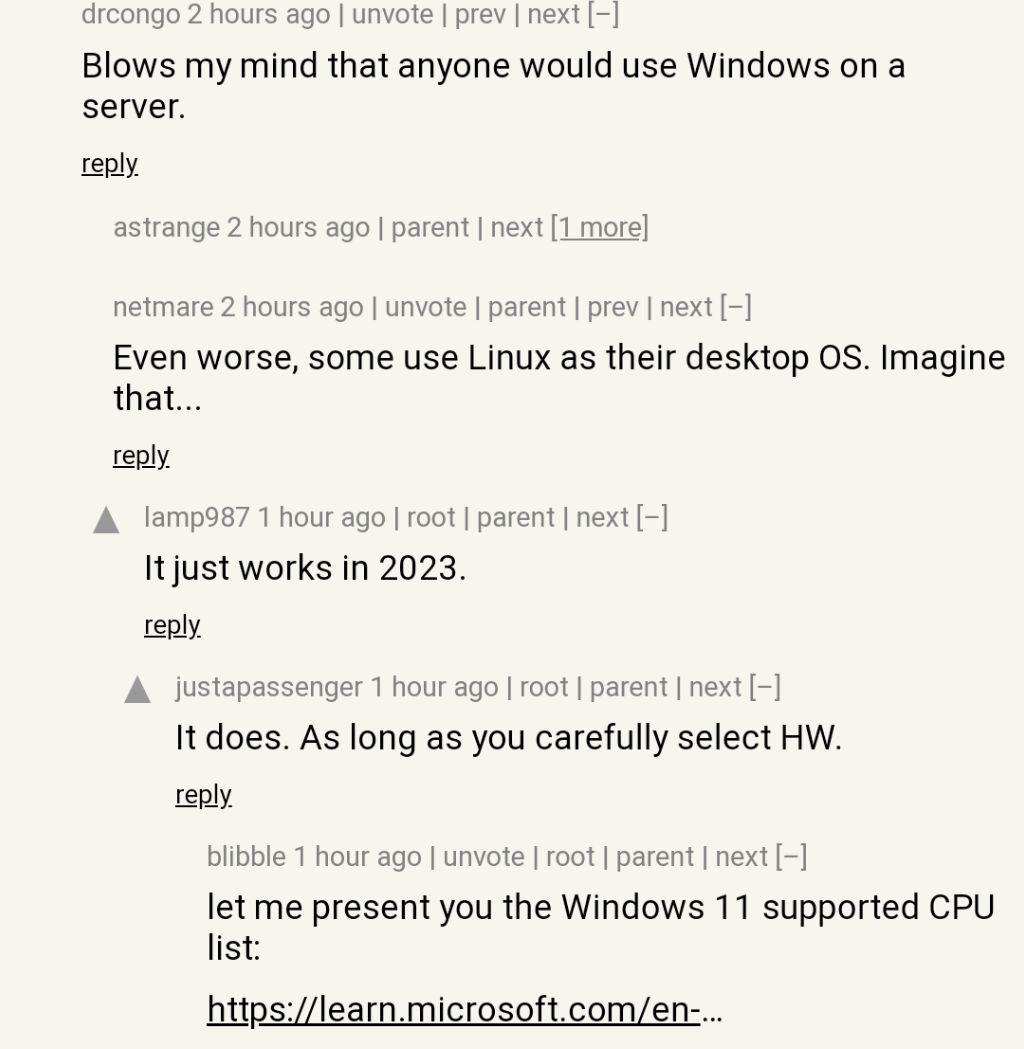this post was submitted on 16 Aug 2023
1424 points (95.7% liked)
Linux
45501 readers
1564 users here now
From Wikipedia, the free encyclopedia
Linux is a family of open source Unix-like operating systems based on the Linux kernel, an operating system kernel first released on September 17, 1991 by Linus Torvalds. Linux is typically packaged in a Linux distribution (or distro for short).
Distributions include the Linux kernel and supporting system software and libraries, many of which are provided by the GNU Project. Many Linux distributions use the word "Linux" in their name, but the Free Software Foundation uses the name GNU/Linux to emphasize the importance of GNU software, causing some controversy.
Rules
- Posts must be relevant to operating systems running the Linux kernel. GNU/Linux or otherwise.
- No misinformation
- No NSFW content
- No hate speech, bigotry, etc
Related Communities
Community icon by Alpár-Etele Méder, licensed under CC BY 3.0
founded 5 years ago
MODERATORS
you are viewing a single comment's thread
view the rest of the comments
view the rest of the comments

You can use Ubuntu and Zorin just fine without the terminal.
You can do this with many distros today. It must have been many years since this person tried Linux.
Yeah, it's painfully obvious that's the case.
Until you try to use a flash drive and nothing can see the default mount point. You can web browse and that's about all
I'm guessing the last time you tried Linux was over 15 years ago
What? Nautilus (ubuntu default file browser) finds drives wherever they are mounted and lists as their own location, as if it was windows. That includes the default mount point. Even if it wasn't detected, it can still get to the mount point by browsing through the file system normally.
Installing software can be done via a software manager (included in ubuntu and most other distros). Software not in the manager is usually distributed as a portable binary (also common on windows) or an app image (even easier to use than an installer). Once installed, that software is the same as on windows.
Besides basic file manipulation, installing/running software, and web browsing, what else does the average user even do? All of it can be done on linux, with or without CLI.